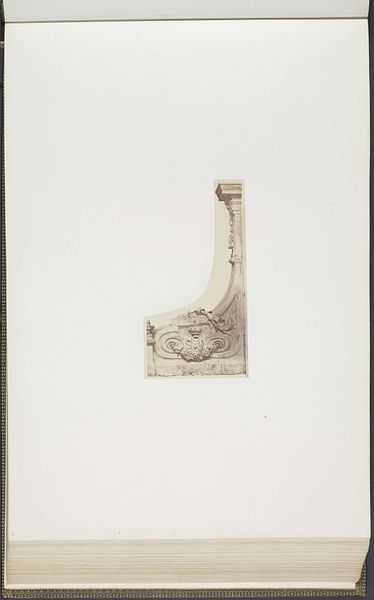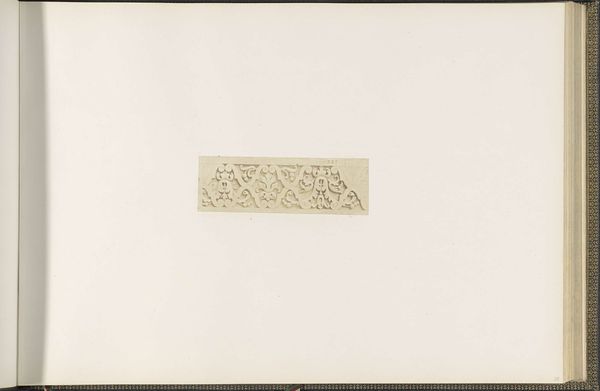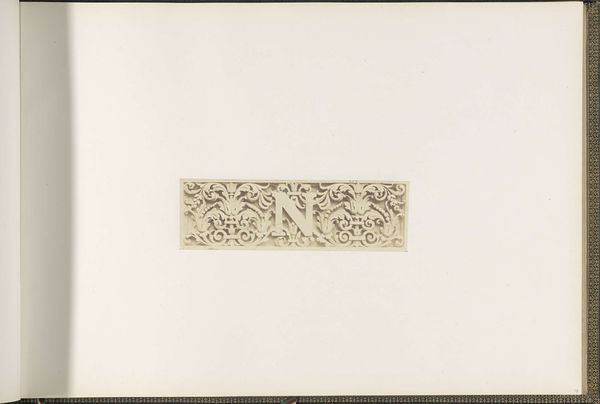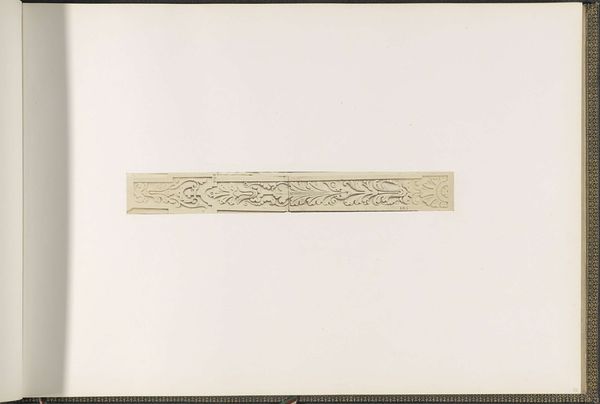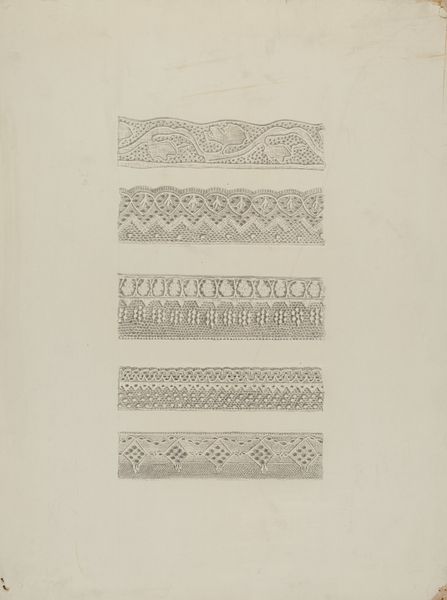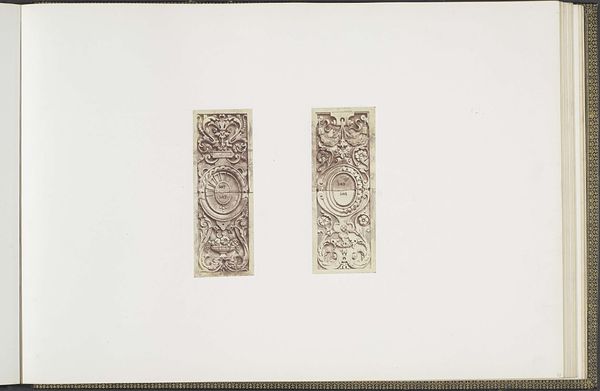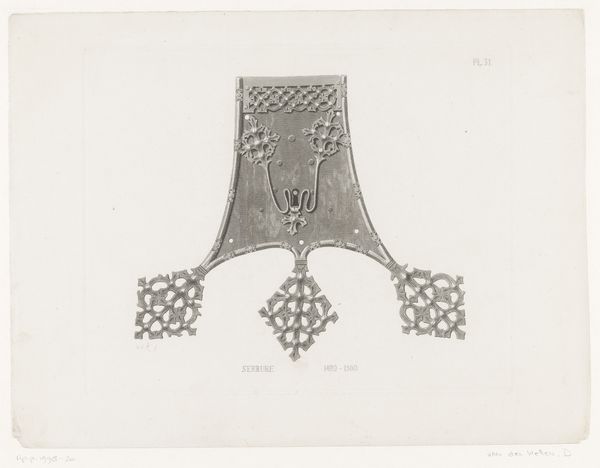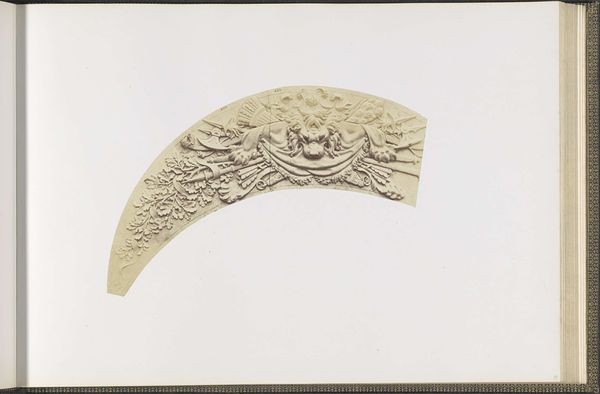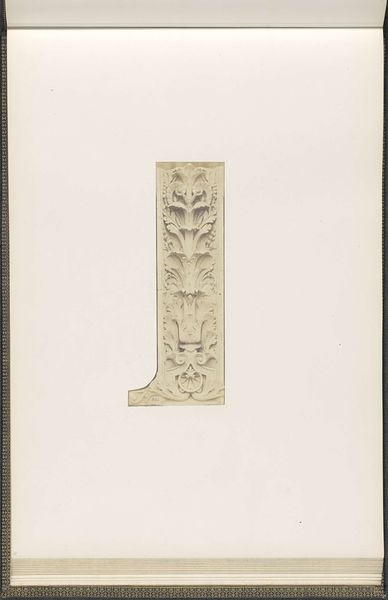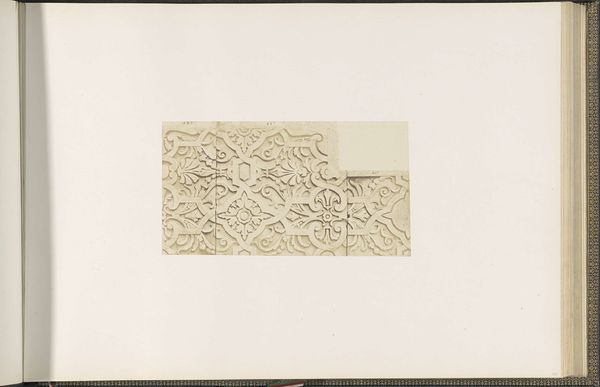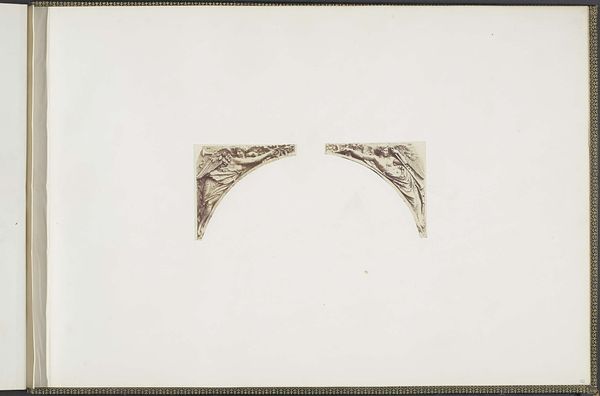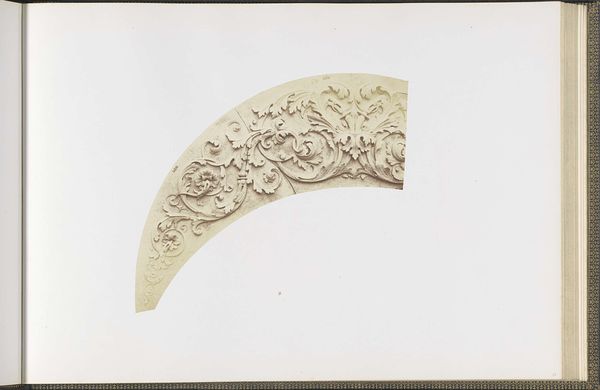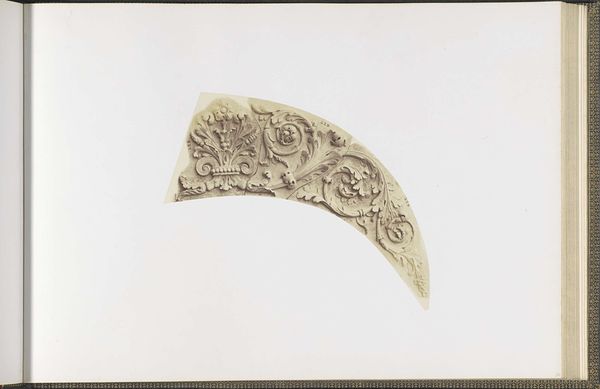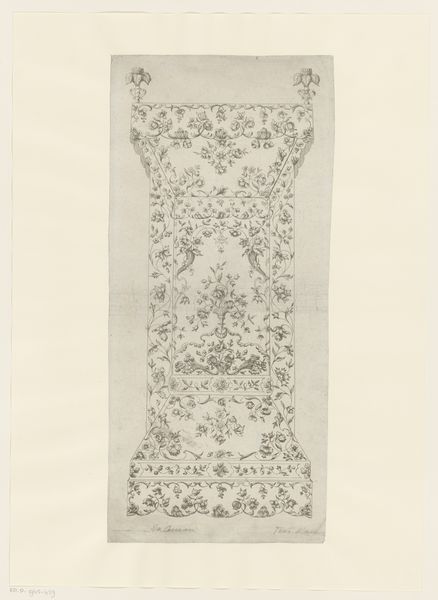
Detail van een gipsmodel voor de versiering van de tweede verdieping van het Pavillon de Turgot c. 1855 - 1857
0:00
0:00
etching, photography, architecture
#
portrait
#
neoclacissism
#
etching
#
etching
#
photography
#
architecture
Dimensions: height 378 mm, width 556 mm
Copyright: Rijks Museum: Open Domain
Editor: We’re looking at "Detail van een gipsmodel voor de versiering van de tweede verdieping van het Pavillon de Turgot," made around 1855-1857 by Edouard Baldus. It seems to be a photograph of a plaster model. The detail is amazing, and it feels almost like a fragment from a grand, historical building. How do you interpret this work? Curator: Well, consider the context. Baldus was working during a time of intense architectural transformation in Paris. This image, showcasing Neoclassical ornament, becomes significant when viewed against the backdrop of Haussmann's renovations, where older structures were being replaced with grand boulevards and buildings designed to project imperial power and bourgeois values. Editor: So, this isn't just a photo of some decoration? Curator: Precisely. It's a document of a specific aesthetic and a particular moment in architectural history. Think about who these Pavilions were for. Aristocrats and important figure heads and imagine this kind of decoration as not simply visually pleasant, but communicating a particular idea of history, permanence and order in a rapidly changing urban landscape. This Neoclassical style referenced an older ideal of social stability. Editor: That makes a lot of sense. It’s like the architecture itself was making a statement about power and continuity. Was photography being used for this reason too? Curator: Absolutely. Photography was a tool for cataloging, preserving, and even promoting these architectural endeavors. Images like this played a role in shaping public perception of these new urban spaces, constructing a narrative of progress and imperial grandeur. This photograph wasn’t just art; it was participating in shaping society’s perception of its built environment and therefore political climate. Editor: That’s fascinating! I never thought about how a photograph of a building detail could be so politically charged. Curator: It reveals how art is intertwined with power, ideology, and social change. The act of selecting this specific detail, and reproducing it via photograph, tells its own story about what the photographer, and likely their patrons, valued and wanted to promote. Editor: Thanks, that gives me a new perspective on the piece and how we can analyze visual information as important records.
Comments
No comments
Be the first to comment and join the conversation on the ultimate creative platform.
